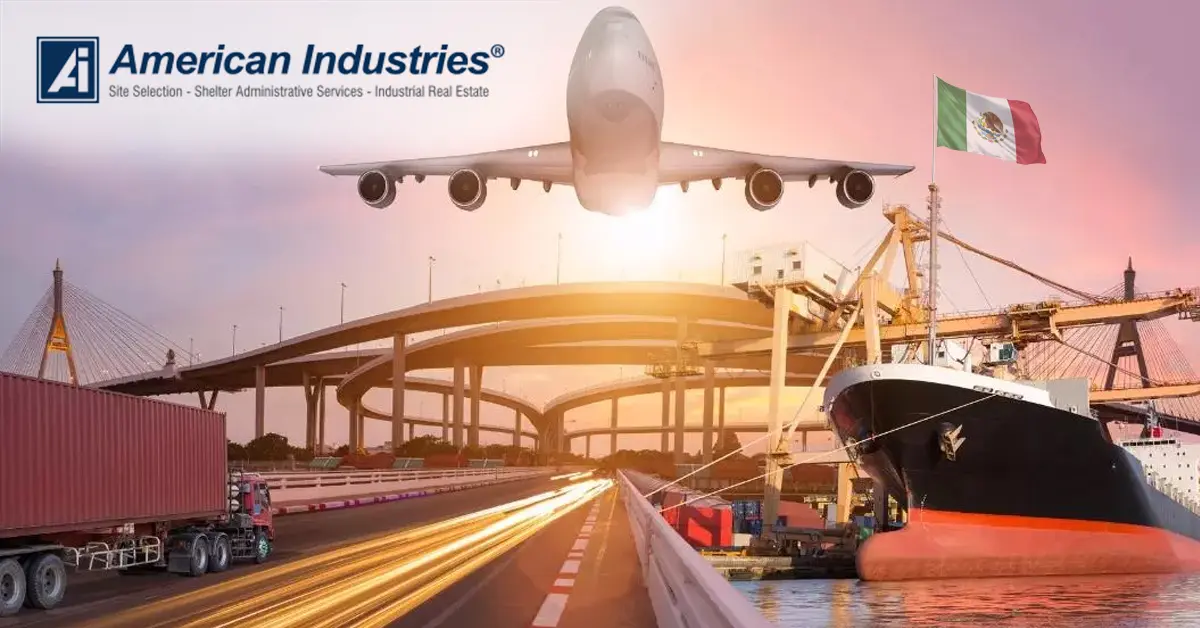Ensuring a Smooth Transition: The Role of Infrastructure in Nearshoring to Mexico
By Sandra Malottky | Chihuahua Business Development Manager at American Industries Group®

Published 09/25/2023
Recent world events have revealed the weaknesses of relocating manufacturing operations to low-cost countries far from primary markets, prompting companies to seek locations closer to their customer bases. With its geographical location bordering one of the world’s largest consumer markets, mature supply base in various industries, and robust logistics infrastructure, Mexico is the ideal nearshoring option. In addition, the country’s well-developed soft landing culture ensures a smooth and efficient transition for businesses. A critical factor in this transition is infrastructure readiness, which includes a range of variables, from the availability of utilities and industrial spaces to connectivity, transportation, workforce capabilities, and scalability. This article will delve into each of these elements and offer insights to help assess and understand infrastructure readiness when considering nearshoring in Mexico.
What Constitutes Infrastructure?
When considering manufacturing in Mexico, we must carefully analyze all the aspects of the infrastructure required for industrial operations. This starts with the availability of industrial spaces in a given area and their suitability for specific manufacturing operations. Understanding regional industrial specializations will help you find suitable facilities, which will significantly impact the efficiency and success of your transition. Just as important to the physical foundation on which your operations are built is having access to reliable utilities, such as electricity, water, and gas. It is crucial to understand the requirements for each specific operation to ensure a seamless establishment and avoid power or water outages or shortages that can severely disrupt production.
Electricity: Availability and Costs
Electricity is a critical utility for manufacturing, especially for companies with very specific or high power requirements. It is important to note that Mexico operates on the same nominal voltages and frequencies as the US, and single-phase power is available in nominal voltages of 120 and 240, while three-phase power comes in 240 and 480. Though power quality can be hot and sometimes has a lower frequency, only the most sensitive applications will require power conditioning. The standard frequency is 60 hertz, and power quality is generally reliable, with occasional outages usually due to significant weather events, making backup systems unnecessary.
The entity in charge of generating, transmitting, and distributing electricity in Mexico is the Comisión Federal de Electricidad or CFE. Rates are competitive, lower than many places in the U.S., and comparable to China. However, connecting to the power grid requires careful planning. Depending on a company’s facilities and the conditions negotiated as part of a lease or purchase of industrial space, they may need to pay connection fees and should establish peak demand and transformer capacity in advance. The process involves developing a wiring plan that must be certified by an electrical engineer in Mexico and approved by the CFE, which costs around $3,500 US and takes approximately three months to complete.
Water: Availability, Treatment, and Specific Needs
Water is another vital utility. Companies manufacturing in Mexico with specific needs for water volumes and treatment options must carefully assess availability in areas of interest to ensure a seamless and efficient operational transition.
Connectivity and Transportation: Roads, Ports, and Airports
In the context of nearshoring, the role of transportation and logistics cannot be overstated. Efficient and reliable transportation networks, including roads, ports, and airports, are indispensable for the smooth movement of goods and personnel. These networks directly impact lead times and the potential for supply chain disruptions. Different areas in Mexico offer distinct advantages for logistics and transport options. For example, northern states will allow significantly shorter transport times via land and rail infrastructure. Other areas provide easy access to a variety of reliable transport options as well, including seaports and international airports. Overall, manufacturing in Mexico allows businesses to reduce logistics costs and improve responsiveness, especially compared to China.
High-Speed Internet, Data Centers, and Stable Telecommunications
In today's digital age, connectivity extends beyond physical transportation. High-speed internet, data centers, and stable telecommunications networks are crucial for seamless operations, real-time communication, and staying up to date with the latest technological developments in manufacturing, such as Industry 4.0. These digital infrastructures enable data-driven decision-making, support advanced manufacturing technologies, and facilitate remote collaboration, making them an integral part of your nearshoring strategy in Mexico.
Availability of Educational Institutions and Workforce Development Programs
A skilled and trainable workforce is another cornerstone of successful nearshoring. Through its triple helix model, which includes the collaboration of industry, academia, and government, Mexico offers a range of educational institutions and workforce development programs tailored to industry needs.
Importance of Local Partnerships
Local partnerships with local chambers of commerce, industry associations, and government entities offer invaluable insights and networking opportunities and facilitate various aspects of the transition process, from regulatory compliance to market entry strategies.
Scalability
As your business grows, your chosen location should be able to accommodate that growth. This involves physical space and the technological advancements that come with scaling up. Mexico’s focus on technological investment ensures that scalability is a viable option.
Conducting a Thorough Infrastructure Assessment
To ensure the success of your nearshoring initiative in Mexico, a crucial step is carrying out a comprehensive infrastructure assessment. This involves evaluating potential locations for industrial spaces, utilities, transportation networks, digital connectivity, and additional factors like workforce readiness, local partnerships, and scalability. Aligning these elements with your company's specific needs is not merely a beneficial step; it's essential for ensuring a smooth and efficient transition—what we call a “soft landing.” To further assure your success in Mexico, consider partnering with a trusted provider of shelter services, which can significantly reduce the learning curve and streamline your transition.
In summary, infrastructure readiness is a multifaceted concept that extends beyond the availability of industrial spaces and utilities. It encompasses a range of factors that collectively contribute to the success and efficiency of your nearshoring initiative. A thorough understanding and assessment of these elements are beneficial for achieving a successful and efficient soft landing in Mexico. If you would like more information about how we can facilitate your company’s soft landing in Mexico, reach out today to schedule a call.
If you would like to find out more about this topic or are interested in receiving a complimentary business case analysis for your operation in Mexico, please fill out this form or contact us at:
US toll-free: +1 (877) 698 3905
CN Toll-free: +1 (400) 076 8899
Attention hours from M to F 9:00 - 18:00 CST
Please note that we do not accept job applications here. If you are interested in applying for a position, please visit the following link: https://www.americanindustriesgroup.com/jobs/
YOU MIGHT ALSO LIKE








